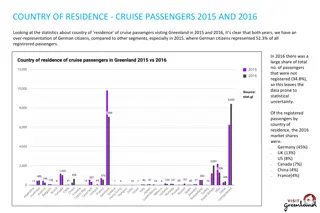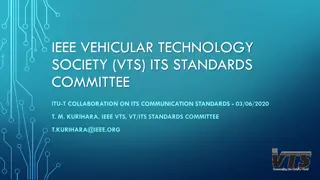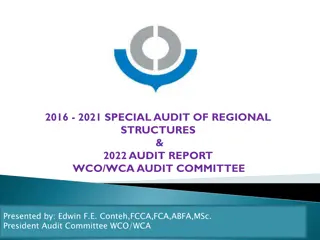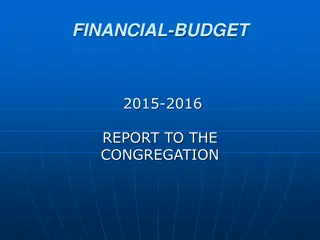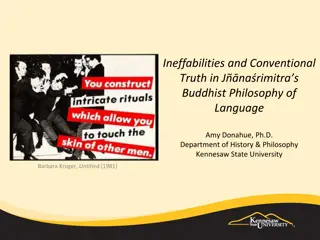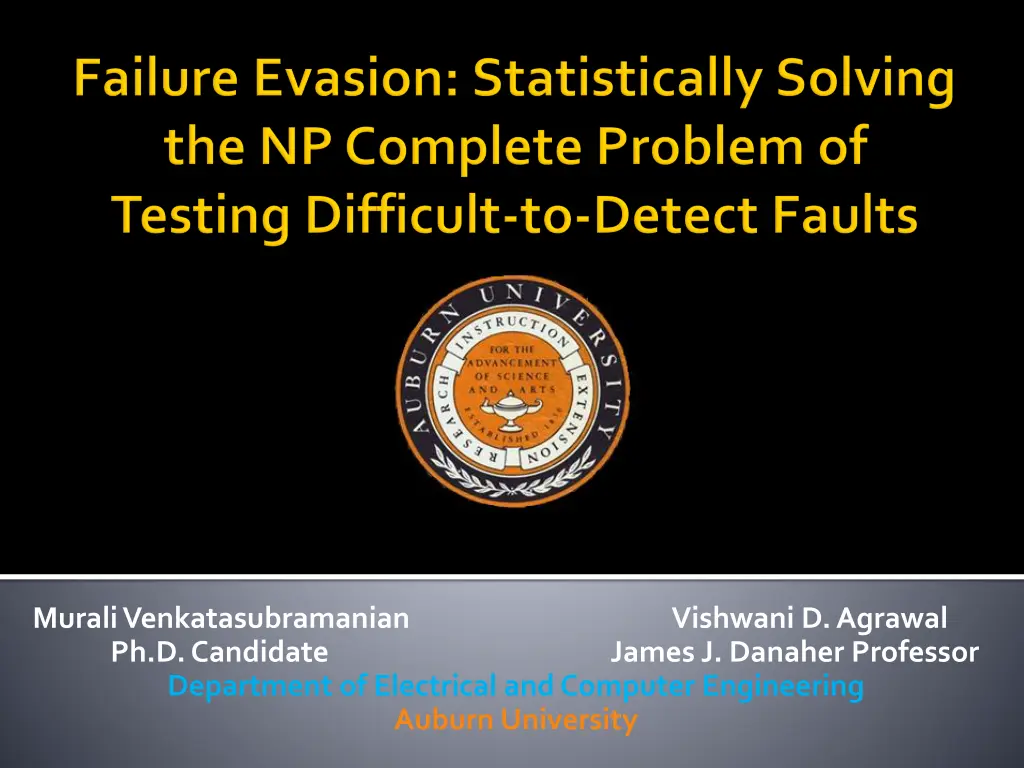
Advanced Algorithms for VLSI Testing Optimization
Explore cutting-edge algorithms in VLSI testing to enhance fault detection and test generation efficiency. Research focuses on overcoming bottlenecks in testing hard-to-detect faults by leveraging failed attempts effectively.
Download Presentation

Please find below an Image/Link to download the presentation.
The content on the website is provided AS IS for your information and personal use only. It may not be sold, licensed, or shared on other websites without obtaining consent from the author. If you encounter any issues during the download, it is possible that the publisher has removed the file from their server.
You are allowed to download the files provided on this website for personal or commercial use, subject to the condition that they are used lawfully. All files are the property of their respective owners.
The content on the website is provided AS IS for your information and personal use only. It may not be sold, licensed, or shared on other websites without obtaining consent from the author.
E N D
Presentation Transcript
Murali Venkatasubramanian Vishwani D. Agrawal Ph.D. Candidate James J. Danaher Professor Department of Electrical and Computer Engineering Auburn University
Definition of problem statement Research summary of ATPG Overview of proposed algorithm Analysis of results Elaboration of Future work Conclusion April 26, 2016 VLSI Test Symposium 2016 2
Given a stuck-at fault, find a test. Specifically, finding tests for hard to detect stuck-at faults. Rephrase the VLSI Testing problem as a database search problem. Need for research to harness potential of database search. Application of Mahalanobis distance metric towards test generation. Improve the bottleneck of finding the unique tests. April 26, 2016 VLSI Test Symposium 2016 3
Fault detection problem is NP complete [Ibarra and Sahni, 1975; Fujiwara and Toida, 1982; Seroussi and Bshouty, 1988]. Worst-case computational complexity is an exponential function in circuit size. Nature of NP problem. Generation of test vectors a classic VLSI problem. Tackled by numerous algorithms. April 26, 2016 VLSI Test Symposium 2016 5
Deterministic algorithms derived from structural description of circuits. D Algorithm [Roth, 1966]. PODEM [Goel, 1981]. FAN [Fujiwara and Shimono, 1983]. And various others... Test sets derived from functional description of circuits [Akers, 1972; Reddy, 1973]. Use of weighted random test generators. Heuristics like input switching activity and weight assignment [Schnurmann et al., 1972]. Skewing input probabiltiy to attain maximum output entropy [Agrawal, 1981]. Adaptive test generation Genetic algorithms [Saab et al. 1992; O Dare and Arslan, 1994; Corno et al., 1996]. Anti-random test generators [Malaiya, 1995]. Using spectral properties of successful tests to generate new test vectors [Yogi and Agrawal, 2006]. April 26, 2016 VLSI Test Symposium 2016 6
Current algorithms hit a bottleneck when testing hard- to-detect faults. Because we are testing hard-to-detect faults, we generally have many trial vectors that do not work. All known algorithms use previous successes to generate new test vectors. But, test generation has lots more failed attempts than successful ones. Current algorithms ignoring a lot of potentially valuable information. How to design a new test algorithm which utilizes the information from failed attempts effectively? April 26, 2016 VLSI Test Symposium 2016 7
How does one prosper in life?? Repeating steps from previous successes. As people say, do not change a successful formula. Learning from past failures and avoiding them. Main conjecture is to avoid all vectors with properties similar to known failed test vectors. The direction of search gets skewed towards the correct test vector. Use an innovative statistical method which computes Mahalanobis distance [Mahalanobis, 1936]. Calculates how many standard deviations away is a point P from a distribution D. Proposed algorithm utilizes both successful and failed test vectors. Moving away from failed vectors will lead to solution in quicker iterations. April 26, 2016 VLSI Test Symposium 2016 9
(? ?)??1(? ?) ? = x = vector of data = Vector of mean values of independent variables S-1 = Inverse covariance matrix Measures how similar or dissimilar are a set of conditions to a sample set. Used to find outliers in a dataset. Properties: Elliptical pattern of distribution of variables. Variations in each direction are different. Accounts for covariance between variables. April 26, 2016 VLSI Test Symposium 2016 10
If X and Y are uncorrelated, there would be a circular or spherical distribution. Euclidian distribution. Correlations between X and Y causes an elliptical pattern to emerge. Variables with alike properties are at same Mahalanobis distance. April 26, 2016 VLSI Test Symposium 2016 11
Used for classifying faults in analog testing [Long et al., 2012; Han et al., 2013]. Also used for multi-dimensional Iddq testing [Nakamura and Tanaka, 2010]. However, Mahalanobis distance has never been used to derive tests for stuck-at faults. Proposed algorithm classifies test vectors in the vector space into three categories: Activation vectors Propagation vectors Failed vectors April 26, 2016 VLSI Test Symposium 2016 12
April 26, 2016 VLSI Test Symposium 2016 13
Initial probability values for random search Initial Probability values for proposed algorithm April 26, 2016 VLSI Test Symposium 2016 14
Probability values for random search Probability values for proposed algorithm April 26, 2016 VLSI Test Symposium 2016 15
Probability values for random search Probability values for proposed algorithm April 26, 2016 VLSI Test Symposium 2016 16
Probability values for random search Probability values for proposed algorithm April 26, 2016 VLSI Test Symposium 2016 17
A n primary input (PI) circuit can have N = 2n possible test vector combinations. A test can be found from among these N vectors. Hence, VLSI testing problem can rephrased as an unsorted database search problem of N elements. In our best interest to implement one of the fastest unsorted database search algorithms to find test vectors. Grover's quantum search algorithm [Grover, 1996] can search through an unsorted database in sub-linear time. Deemed the fastest way to search an unsorted database theoretically [Bennett el al., 1997]. Growing interest in quantum computing leading to revisiting of NP hard problems. Find optimal solutions in linear time. April 26, 2016 VLSI Test Symposium 2016 19
Simulated various benchmark circuits using our proposed algorithm. Focused on stuck-at faults with only 1-2 tests. Derived average iteration time for each case. Compared results with random search and Grover s quantum database search. Use of Grover s algorithm a yardstick to show efficiency of our algorithm. April 26, 2016 VLSI Test Symposium 2016 20
The given circuit has a stuck-at-1 fault on a line. Fault site has: One successful test. Eight activation vectors. Four propagation vectors. Performed 100 trial runs on the faulty circuit. April 26, 2016 VLSI Test Symposium 2016 21
Iterative search duration distribution to search for the correct test vector. April 26, 2016 VLSI Test Symposium 2016 22
Search space size, N = 2#PI Grover s quantum search ( N) Proposed algorithm Random search (~ N/2) Circuit Decoder (#PI = 8) 256 16 24 133 Ones Counter (#PI = 9) 512 23 76 288 int2float (#PI = 11) 2048 46 180 1010 Parity logic (#PI = 16) 65536 256 847 32751 mux logic (#PI = 21) 2097152 1448 6842 1048573 April 26, 2016 VLSI Test Symposium 2016 23
April 26, 2016 VLSI Test Symposium 2016 24
Showed evolution of ATPG algorithms over the past 50 years. Redefined the testing problem as a database search problem. Used Mahalanobis distance to formalize algorithm. Results demonstrate proof of concept of our algorithm. Comparison with quantum search shows algorithm is on same order of search time or iteration time. April 26, 2016 VLSI Test Symposium 2016 25
Success consists of going from failure to failure without loss of enthusiasm. - Sir Winston Churchill April 26, 2016 VLSI Test Symposium 2016 26
[1] O. H. Ibarra and S. Sahni, Polynomially complete fault detection problems, IEEE Trans. Computers, vol. 24, no. 3, pp. 242 249, 1975. [2] H. Fujiwara and S. Toida, The complexity of fault detection problems for combinational logic circuits, IEEE Transactions on Computers, vol. 100, no. 6, pp. 555 560, 1982. [3] G. Seroussi and N. H. Bshouty, Vector sets for exhaustive testing of logic circuits, IEEE Transactions on Information Theory, vol. 34, no. 3, pp. 513 522, 1988. [4] J. P. Roth, Diagnosis of automata failures: A calculus and a method, IBM Journal of Research and Development, vol. 10, no. 4, pp. 278 291, 1966. [5] P. Goel, An implicit enumeration algorithm to generate tests for combinational logic circuits, IEEE Transactions on Computers, vol. 100, no. 3, pp. 215 222, 1981. [6] H. Fujiwara and T. Shimono, On the acceleration of test generation algorithms, IEEE Transactions on Computers, vol. 100, no. 12, pp. 1137 1144, 1983. [7] S. B. Akers, Universal test sets for logic networks, IEEE Conference Record of 13th Annual Symposium on Switching and Automata Theory, 1972, pp. 177 184. [8] S. M. Reddy, Complete test sets for logic functions, IEEE Transactions on Computers, vol. 100, no. 11, pp. 1016 1020, 1973. April 26, 2016 VLSI Test Symposium 2016 27
[9] H. D. Schnurmann, E. Lindbloom, and R. G. Carpenter, The weighted random test- pattern generator, IEEE Transactions on Computers, vol. 100, no. 7, pp. 695 700, 1975. [10] V. D. Agrawal, An information theoretic approach to digital fault testing, IEEE Transactions on Computers, vol. 30, no. 8, pp. 582 587, 1981. [11] D. G. Saab, Y. G. Saab, and J. A. Abraham, CRIS: A Test Cultivation Program for Sequential VLSI Circuits, in Proc. IEEE/ACM International Conference on Computer- Aided Design, 1992, pp. 216 219. [12] M. O Dare and T. Arslan, Generating Test Patterns for VLSI Circuits Using a Genetic Algorithm, Electronics Letters, vol. 30, no. 10, pp. 778 779, 1994. [13] F. Corno, P. Prinetto, M. Rebaudengo, and M. S. Reorda, GATTO: A Genetic Algorithm for Automatic Test Pattern Generation for Large Synchronous Sequential Circuits, IEEE Transactions on Computer-Aided Design of Integrated Circuits and Systems, vol. 15, no. 8, pp. 991 1000, 1996. [14] Y. K. Malaiya, Antirandom Testing: Getting The Most Out of Black-box Testing, in Proc. 6th IEEE International Symp. Software Reliability Engineering, 1995, pp. 86 95. [15] N. Yogi and V. D. Agrawal, Spectral RTL test generation for gate-level stuck-at faults, Proc. 15th IEEE Asian Test Symposium, 2006, pp. 83 88. April 26, 2016 VLSI Test Symposium 2016 28
[16] S. T. Chakradhar, V. D. Agrawal, and S. G. Rothweiler, A Transitive Closure Algorithm for Test Generation, IEEE Transactions on Computer-Aided Design of Integrated Circuits and Systems, vol. 12, no. 7, pp. 1015 1028, 1993. [17] P. Girard, L. Guiller, C. Landrault, and S. Pravossoudovitch, A Test Vector Ordering Technique for Switching Activity Reduction During Test Operation, in Proc. 9th IEEE Great Lakes Symp. VLSI, 1999, pp. 24 27. [18] P. Venkataramani, S. Sindia, and V. D. Agrawal, A Test Time Theorem and its Applications, Journal of Electronic Testing: Theory and Applications, vol. 30, no. 2, pp. 229 236, 2014. [19] V. Sheshadri, V. D. Agrawal, and P. Agrawal, Power-aware SoC Test Optimization Through Dynamic Voltage and Frequency Scaling, in Proc. IFIP/IEEE 21st International Conference on Very Large Scale Integration (VLSI-SoC), 2013, pp. 102 107. [20] R. Drechsler, S. Eggersglu , G. Fey, A. Glowatz, F. Hapke, J. Schloeffel, and D. Tille, On Acceleration of SAT-Based ATPG for Industrial Designs, IEEE Transactions on ComputerAided Design of Integrated Circuits and Systems, vol. 27, no. 7, pp. 1329 1333, July 2008. [21] S. Kirkpatrick, C. D. Gelatt, M. P. Vecchi, et al., Optimization by Simulated Annealing, Science, vol. 220, no. 4598, pp. 671 680, 1983. April 26, 2016 VLSI Test Symposium 2016 29
[22] P. W. Shor, Polynomial-time Algorithms For Prime Factorization and Discrete Logarithms on a Quantum Computer, SIAM Journal on Computing, vol. 26, no. 5, pp. 1484 1509, 1997. [23] L. K. Grover, A Fast Quantum Mechanical Algorithm for Database Search, in Proc. 28th Annual ACM Symposium on Theory of Computing, 1996, pp. 212 219. [24] M. A. Nielsen and I. L. Chuang, Quantum Computation and Quantum Information. New York: Cambridge University Press, 10th edition, 2011. [25]P. C. Mahalanobis, On the Generalized Distance in Statistics, Proceedings of the National Institute of Sciences (Calcutta), vol. 2, pp. 49 55, 1936. [25] M. Venkatasubramanian and V. D. Agrawal, Quest for a Quantum Search Algorithm for Testing Stuck-at Faults in Digital Circuits, in Proc. 29th IEEE International Symp. Defect and Fault Tolerance in VLSI and Nanotechnology Systems, pp. 127 132, Oct. 2015. [26] M. Venkatasubramanian and V. Agrawal, Database Search and ATPG Interdisciplinary Domains and Algorithms, in 29th IEEE International Conference on VLSI Design, Jan. 2016. [27] M. Venkatasubramanian and V. Agrawal, A New Test Vector Search Algorithm for a Single Stuck-at Fault using Probabilistic Correlation, in IEEE 23rd North Atlantic Test Workshop (NATW), pp. 57 60, May 2014. April 26, 2016 VLSI Test Symposium 2016 30

